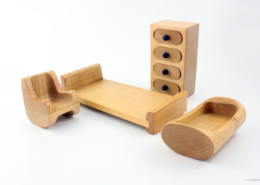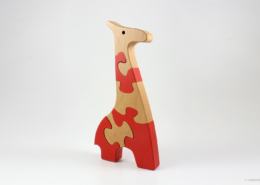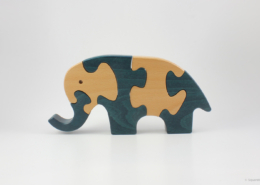Designer

Designer


1909 – 2008
Antonio Vitali was born in 1909 to middle class Italian and Swiss parents. He studied under the well-known Swiss sculptor Otto Münch and at the Bauhaus-inspired Zurich School of the Applied Arts (Kunstgewerbeschule) in the late-1920s. After living the Bohemian artist’s life and studying at private art academies in Paris in the 1930s he moved back to Bern Switzerland to enter the Swiss army. During this time he migrated from the life of a sculptor to that of a professional photographer. It was only in 1938 that Vitali revisited his dream of living independently as a sculptor.
In 1944 Vitali opened his workshop and store in the old town of Zurich at Neumarkt 4. His first efforts included furniture pull ducks wooden trains barns and doll cradles. This was the beginning of the Vitali legacy of producing hand carved carefully rounded toys that evolved from his observation of how his own children play. After the end of the war he formed a business relationship with Switzerlands’ most important toy store Franz Carl Weber (FCW). The relationship with FCW eventually ended as Vitali realized that his toys sold better in toy stores and crafts stores where customers could be properly advised and were willing to pay a bit more for a high quality hand-crafted product. As a result he formed a business relationship with the toy specialist Pastorini and the Swiss national crafts store “Heimatwerk”. His strategy proved to be a success and his toys became a critical and financial success. As a result of his toys being highlighted by the Swiss artist and architect Max Bill in the book “FORM” about contemporary design the American toy producer Creative Playthings discovered him. The relationship with Creative Playthings opened new mass-production possibilities. However Vitali wanted to differentiate the beautiful yet mass-produced wooden toys from his own studio creations and suggested that the toys be called “Playforms” for the U.S. market.